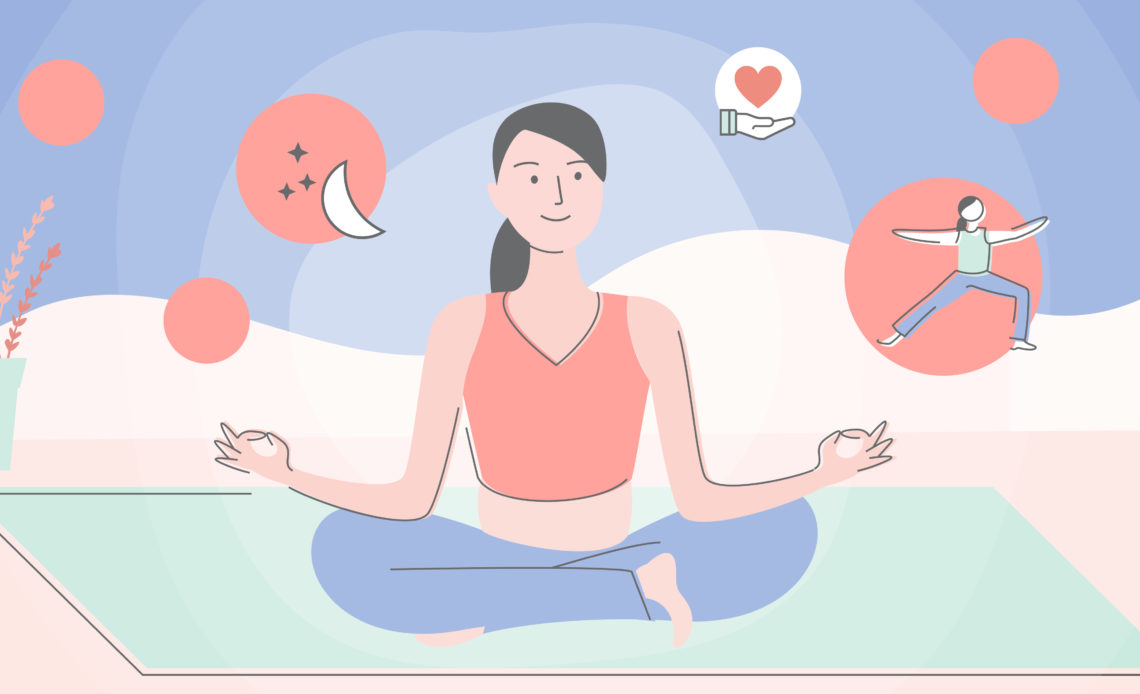International Yoga Day, celebrated annually on June 21st, offers a global opportunity to highlight the benefits of yoga in promoting health and well-being. For women, yoga presents a holistic approach to health management, addressing physical, mental, and emotional needs. This ancient practice, which combines physical postures, breathing exercises, and meditation, can significantly enhance overall health and quality of life for women at various stages of their lives.
Understanding Holistic Health
Holistic health focuses on the whole person rather than just treating symptoms of a disease. It encompasses physical, mental, emotional, and social well-being. In the context of women’s health, a holistic approach considers the unique physiological and psychological needs of women, which can vary greatly from men’s health requirements. Factors such as hormonal fluctuations, reproductive health, and stress management are integral to a woman’s health and can be effectively managed through yoga.
Physical Benefits of Yoga for Women
- Improved Flexibility and Strength: Yoga postures, or asanas, enhance muscle tone, flexibility, and strength. Practices like Vinyasa and Ashtanga yoga are particularly effective for building muscle strength and cardiovascular health.
- Hormonal Balance: Certain yoga poses can help balance hormones, which is crucial for women experiencing menstrual irregularities, menopause, or thyroid issues. Poses such as the Butterfly Pose (Baddha Konasana) and the Reclining Bound Angle Pose (Supta Baddha Konasana) can alleviate symptoms related to hormonal imbalances.
- Menstrual Health: Yoga can alleviate menstrual pain and discomfort. Gentle practices like Hatha yoga can reduce cramps and bloating. The Cat-Cow Pose (Marjaryasana-Bitilasana) and Child’s Pose (Balasana) are particularly beneficial during menstruation.
- Bone Health: Weight-bearing poses in yoga, such as Tree Pose (Vrksasana) and Warrior Poses (Virabhadrasana), can enhance bone density and help prevent osteoporosis, a common concern for women as they age.
- Postpartum Recovery: Yoga supports postpartum recovery by strengthening the pelvic floor, reducing back pain, and aiding in mental relaxation. Poses like Bridge Pose (Setu Bandhasana) and restorative practices can be very effective.
Mental and Emotional Benefits
- Stress Reduction: Yoga reduces stress by promoting relaxation and reducing the levels of the stress hormone cortisol. Practices like Pranayama (breath control) and meditation calm the mind and enhance emotional stability.
- Improved Mental Health: Regular yoga practice has been shown to reduce symptoms of anxiety and depression. Mindfulness meditation, which is often integrated into yoga, helps cultivate a sense of inner peace and emotional resilience.
- Enhanced Focus and Concentration: The meditative aspects of yoga enhance cognitive function and mental clarity. Practices like Tratak (concentration on a single point) improve focus and concentration, which can be beneficial in managing the demands of modern life.
- Better Sleep: Yoga can improve sleep quality by promoting relaxation and reducing stress. Gentle evening practices, such as Yoga Nidra (yogic sleep), can prepare the body and mind for restful sleep.
Social and Spiritual Benefits
- Community and Connection: Participating in yoga classes fosters a sense of community and support. Group practices provide social interaction, which can combat feelings of isolation and loneliness.
- Spiritual Growth: Yoga encourages self-reflection and personal growth. The practice of Svadhyaya (self-study) helps women gain a deeper understanding of themselves and their life purpose.
- Mind-Body Connection: Yoga promotes awareness of the mind-body connection, helping women to listen to their bodies and respond to their needs. This awareness is crucial for maintaining overall health and well-being.
Practical Tips for Incorporating Yoga into Daily Life
- Start with Simple Practices: Beginners can start with simple poses and gradually progress to more advanced practices. Consistency is more important than intensity.
- Schedule Regular Practice: Dedicate a specific time each day for yoga practice. Even 15-30 minutes of daily practice can yield significant benefits.
- Find the Right Style: Choose a yoga style that suits your needs and preferences. For relaxation, try Yin or Restorative yoga; for a more vigorous workout, try Vinyasa or Power yoga.
- Incorporate Breathwork and Meditation: Combine physical postures with Pranayama and meditation for a comprehensive approach to health. Techniques like Alternate Nostril Breathing (Nadi Shodhana) can enhance mental clarity and relaxation.
- Seek Guidance: Join a yoga class or seek guidance from a certified yoga instructor to ensure proper alignment and technique.
Conclusion
On this International Yoga Day, women around the world are encouraged to embrace yoga as a holistic approach to managing their health. Yoga offers a multitude of benefits that address the unique physical, mental, and emotional needs of women. By integrating yoga into daily life, women can achieve a balanced and healthy lifestyle, enhancing their overall well-being and quality of life.



